A Routine Cargo Run Turns Tragic
In the quiet pre-dawn hours of October 5, 2021, a Dassault Falcon 20 jet, operating as Pak West Airlines Flight 887 for Sierra West Airlines, lined up for an instrument approach into Thomson-McDuffie County Airport (HQU) in Georgia. It was a familiar night cargo run — but this flight would end in devastation. Less than a mile from the runway, the aircraft collided with trees and terrain, killing both the captain and first officer on board.
This is the story of how miscommunication, procedural deviations, and poor cockpit dynamics converged in the darkness, culminating in tragedy. As always, our goal here isn’t just to recount what happened, but to understand why — and how future accidents can be prevented.
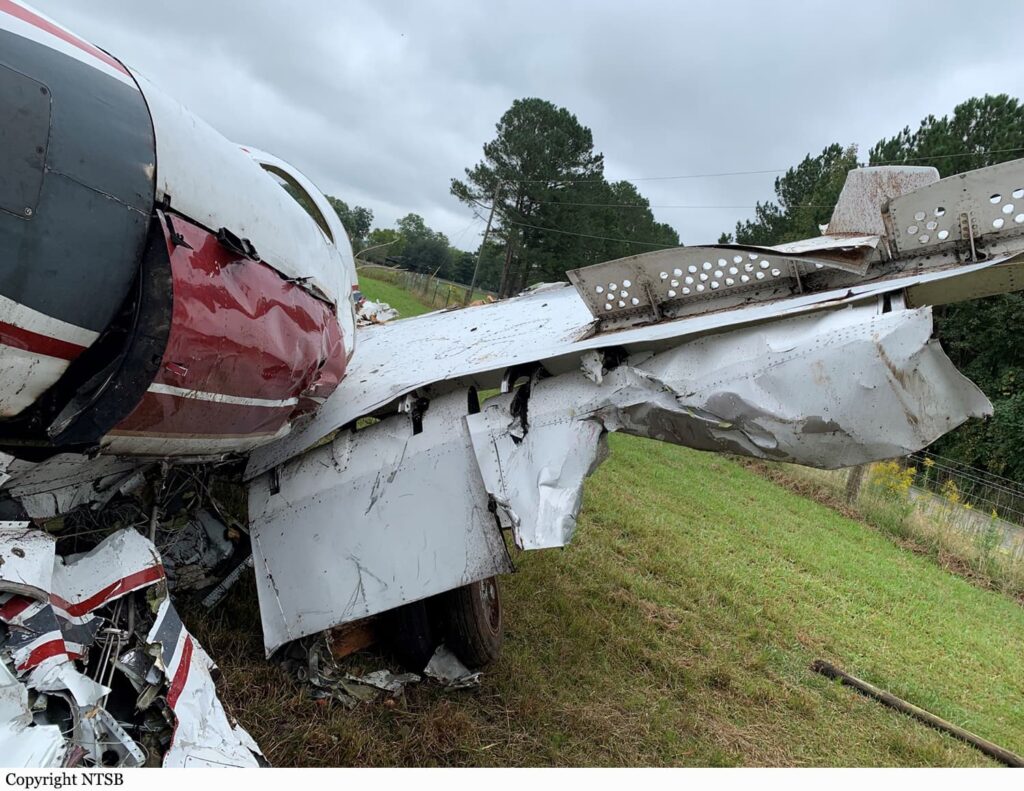
The Crew: Experienced, but Strained
The captain, 73 years old, was an airline transport pilot with over 11,955 hours of total flight time, including 1,665 hours in the Falcon 20. Despite his experience, his training history revealed multiple checkride failures and retraining for tasks like steep turns and circling approaches.
The first officer, aged 63, held a commercial certificate with 10,908 hours total, and 1,248 hours in the Falcon 20. However, despite his years with the company, he had never been promoted to captain. The operator noted persistent concerns about his airmanship and decision-making.
Together, they were a seasoned pair. But experience alone wasn’t enough — and their cockpit chemistry would soon reveal deep cracks.
Setting the Stage: Delays and Darkness
The flight had two legs that night. The first, from El Paso to Lubbock, was uneventful. But once in Lubbock, a 2-hour, 20-minute freight delay pushed their schedule into the early morning hours. The second leg, destined for HQU, launched into darkness under a high-stress, fatiguing rhythm — not uncommon in the cargo world.
Approximately 40 minutes from Thomson, the crew queried air traffic control about NOTAMs affecting the airport’s ILS approach. The response was problematic: the controller incorrectly admitted he didn’t understand the abbreviation “GP” (glidepath) and didn’t inform the pilots that the glidepath was not in service — a crucial fact. Though not required to emphasize it, this lack of clarity created confusion at a critical moment.
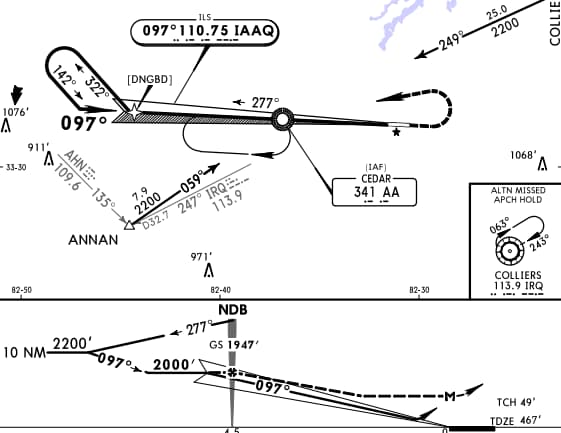
A Fast and High Approach
As the aircraft neared its destination, the captain reported the airport in sight and canceled IFR services. But the approach was already deteriorating.
They crossed the final approach fix high, fast, and off course. Airspeed was around 150 knots — well above the Vref of 113 knots. The aircraft was 600 feet above a standard 3° glide path, and trending left of the centerline.
Instead of calling for a go-around, the captain instructed the first officer to use the air brakes — a procedure explicitly prohibited by the aircraft flight manual unless anti-ice was in use (it wasn’t). The aircraft entered a high descent rate, with the air brakes deployed, landing gear extended, and flaps set to full. There’s no manufacturer data for this configuration — it’s simply not how the Falcon 20 was meant to fly on approach.
Cockpit Breakdown
The cockpit voice recorder paints a disturbing picture of a dysfunctional crew. The captain — who was not the flying pilot — repeatedly yelled at and criticized the first officer during descent. He gave conflicting and urgent instructions, took the controls multiple times, then handed them back.
“You fly the damn airplane,” he barked, frustrated and exhausted. “I don’t want you to kill me.”
This wasn’t just stress. It was a breakdown in crew resource management (CRM) — the collaborative communication and decision-making process that’s foundational to safe flight. At multiple points, the captain had opportunities to take over, especially given the first officer’s known performance issues. But instead, the flight continued down an unstable and dangerous path.
No stabilized approach callouts were made. No go-around was initiated.
At one point, the first officer denied being high, contradicting the captain. Moments later, the captain warned, “You got trees.” The engines spooled up, the stall warning sounded — and then silence.

The Crash
The Falcon 20 impacted trees approximately 0.7 nautical miles from the runway threshold. Surveillance footage confirmed that visibility wasn’t a factor — the aircraft’s landing lights were visible until the moment of impact. The aircraft broke apart over an 880-foot debris field. There was no fire. Both pilots died of blunt force trauma.
Investigators later confirmed that both air brakes were extended, and power was near flight idle until just seconds before impact. A last-ditch application of thrust came too late.
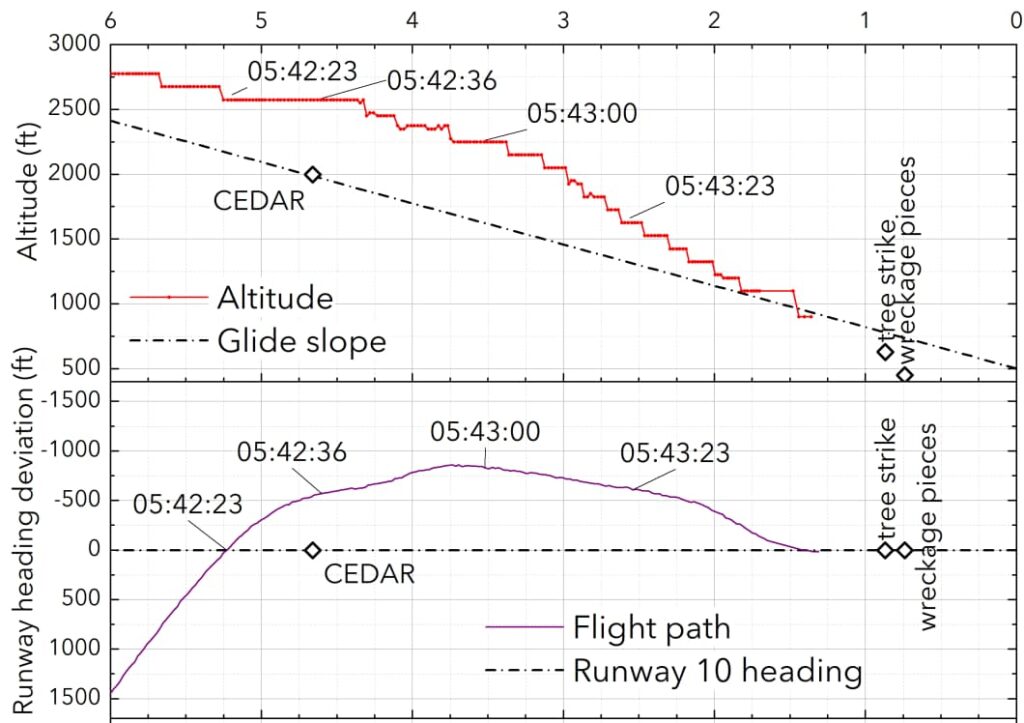
What Went Wrong: A Cascade of Failures
The NTSB identified the probable cause as the flight crew’s continuation of an unstable approach and use of air brakes in violation of aircraft limitations. But that’s only the beginning.
Several contributing factors included:
- CRM Failure: The captain’s decision not to take over despite obvious signs of trouble.
- Training Gaps: Both pilots had histories of subpar performance, yet were still flying together.
- Lack of SMS and FDM: The operator had no Safety Management System or Flight Data Monitoring — tools that might have flagged the crew’s repeated procedural deviations before disaster struck.
- ATC Communication Issues: While not deemed causal, the controller’s misunderstanding of NOTAM terminology added confusion.
Lessons in Leadership and Safety
This accident underscores a painful truth in aviation: even experienced pilots can make catastrophic mistakes, especially in a toxic or dysfunctional cockpit environment. Leadership in the air is about more than just seniority or hours logged — it’s about judgment, communication, and teamwork.
Some key takeaways:
- Stabilized approaches save lives. If you’re too high, too fast, or not configured properly — go around. Always.
- Crew Resource Management is vital. A flight deck must be a place of clarity and collaboration, not conflict and chaos.
- Proactive safety systems matter. SMS and FDM aren’t bureaucratic checkboxes; they’re vital tools to identify risks before they become accidents.
In Memory
This flight ended in tragedy, but it leaves behind vital insights for the industry. Safety is not just about the aircraft — it’s about the culture, the communication, and the decisions made under pressure. Let’s honor these lessons with action.

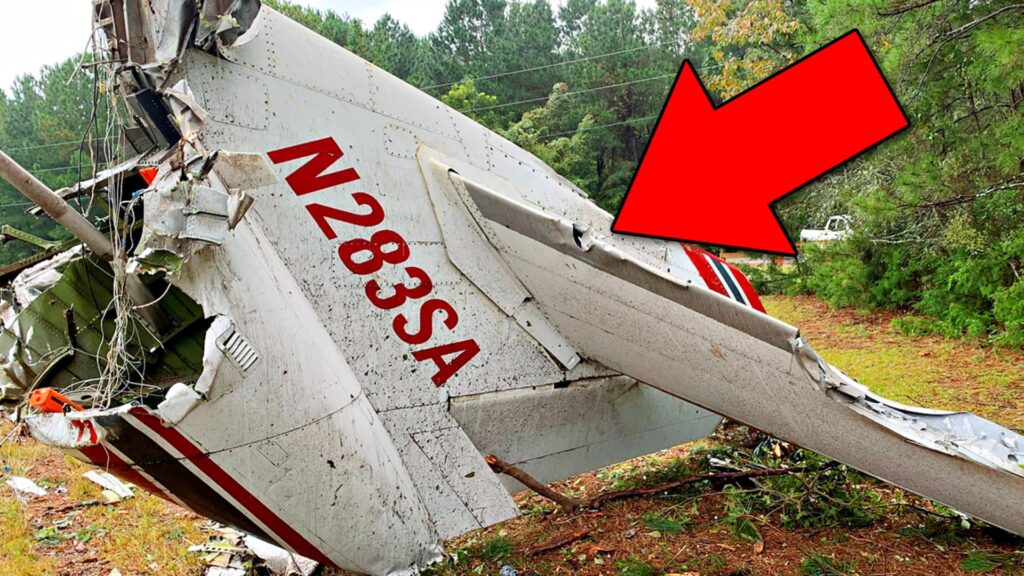


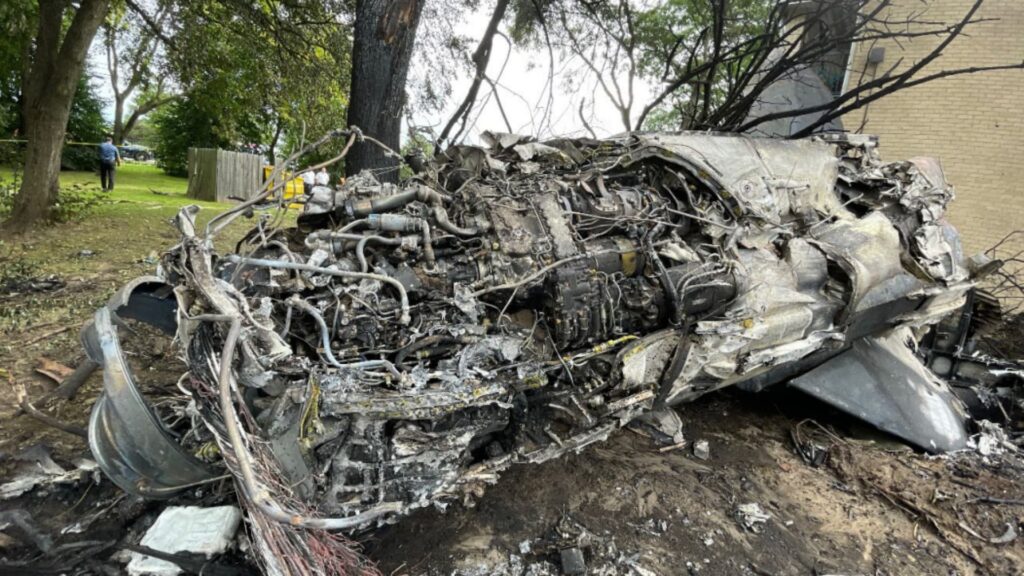
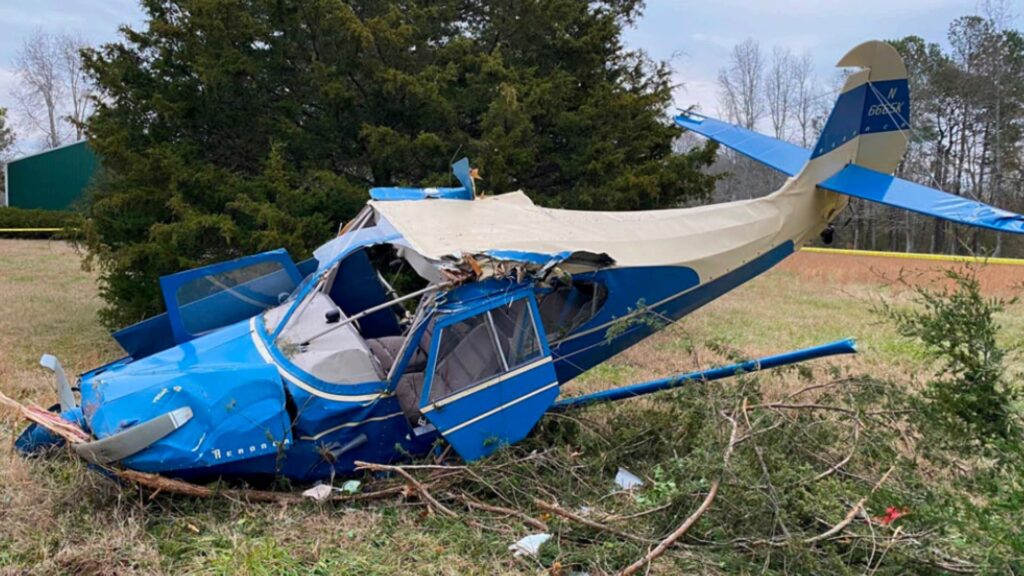


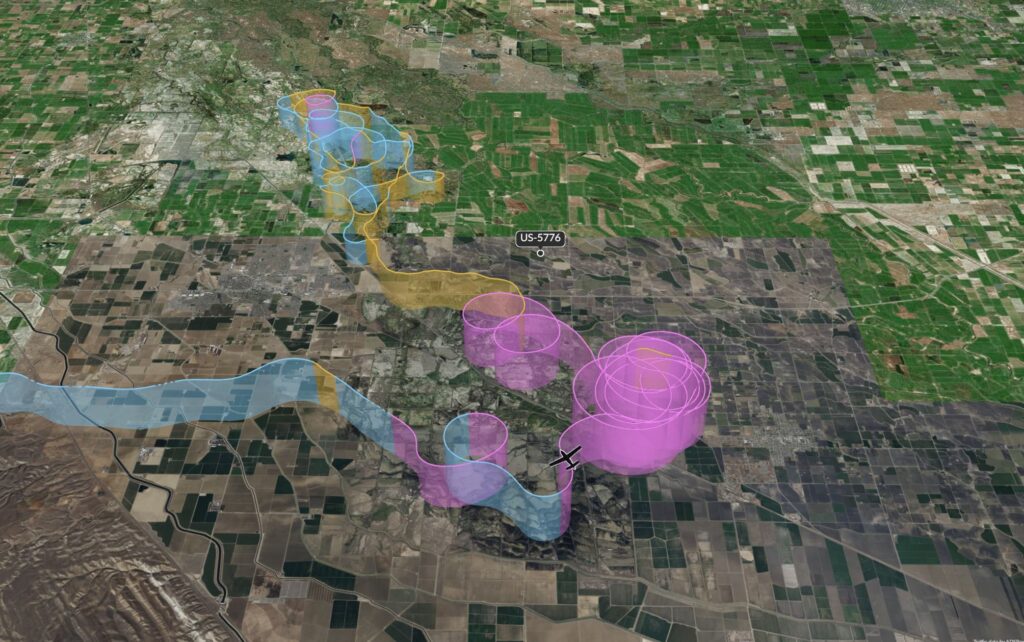
14 Comments
Guess Lineup, Meatball, Angle of Attack was not in the vocabulary. Professionalism must have left when the speed brakes were extended. Your takeaways are right on.
Very interesting and informative.
Your assessment of the failures incurred are accurate, however I am of the opinion the organizations management has an important role in this failure. Pilots with multiple checkride failures are a huge red flag. Allowing them to continue to fly just attenuates the problem . Flying in a crew environment is a “team sport” and this accident illustrates Reasoner’s “Swiss Cheese” model effectively.
“You fly the damn airplane,” he barked, frustrated and exhausted. “I don’t want yo to kill me.” Boy…talk about stress!!
https://www.chronicleonline.com/news/local/small-plane-crashes-at-fort-island-trail-park-one-fatality/article_a9576aba-08c4-512f-bbff-ad54bc302e70.html
I’m sorry, I realize that this is not the place for this request but I didn’t know where the proper place would be. In October 2024 a twin engine plane went down buy Fort island beach / Chrystal River Florida. It seamed odd to me since it was a twin engine aircraft so two engine failures are unlikely, the closest airport was not that far away, and there was water everywhere in the area that might have been the better option to “ditch ” if one had to. I am not a pilot, I just really enjoy your channel. I was surprised that I never heard another thing about this crash. I am very curious about the cause and I was wondering if you would be interested in looking into it for your channel. Thanks CHUCK
https://asn.flightsafety.org/wikibase/447492
It will probably take a year or more before the NTSB issues a final report on this accident. You can look up the accident on their site. https://www.ntsb.gov/Pages/monthly.aspx
They will often upload info as they go along (such as witness statements, examination of the wreckage, etc.)
I like your analysis on every accident you have covered. Great work, and honest work at that. Keep it up, you may save lives if people who fly follow your
work…as I believe they do. I think Juan Brown does good work as well, also a major safety service in a time when F.A.A. is ‘absent’ from aviation safety.
Both of you have earned a lot of aviator’s respect for accurate, concise, and respectful accident analysis. Thank you!
best wishes,
D.C.
former b-727 second officer, EAL
While a pilot instructor and charter pilot, for an FBO, I was required, on occasion, to copilot a king Air 90, due to low weather conditions. As I had no rating in the airplane. I was really only an observing passenger. I complained to my operator that I needed a Type Rating, to be competent but the company wouldn’t spend the money for any training. In addition, the Pilot I had to fly with was a grouchy Bear. He would constantly warn me to keep my eyes outside. He told me I was to just along to look for traffic. I was not comfortable flying with the guy as he would constantly break minimums on instrument approaches. His method was to perform a missed the approach, go around getting lower and lower, usually busting minimums, until being able to complete the landing. I finally refused to fly with him so I was fired. I felt that could have probably saved my life. I found out later his poor attitude was due to a bad case of hemorrhoids as he had to use a hemorrhoidal cushion, while flying, to be comfortable. I don’t think his company was aware, of how dangerous his flying habits were, as he most often was able to complete the flights.
In 2010, while on a post-2008 meltdown Leave Of Absence from my Major Airline, I briefly worked with this fool in Tanzania. It was a shoestring outfit flying passengers in DC-3s from Dar es Salaam, and he was hired because he supposedly had 800 hours of DC-3 PIC time. The company didn’t last long, and both its DC-3s are still sitting in Tanzania, one at Dar es Salaam and one at Zanzibar. Wrecks, now.
As it turned out, Ray and I lived in the same small neighbourhood in Phoenix AZ. He was one of the worst pilots I ever flew with, couldn’t maintain altitude within 800 feet, airspeed within 20 knots, sloppy and disorganised, but he thought he was ace-of-base.
On a personal level he was belligerent, thin-skinned and abrasive. When I brought up his inability to fly within 800 feet of assigned altitude, he literally wanted to fight me. He was a big man, but I was bigger and younger so I called his bluff and he backed down. He had a temper problem, and he was NOT the sharpest tool in the shed. He claimed to own a MiG-15 and that he had been a DC-8 captain for some freight company in the USA. Certainly didn’t fly like it!
In 2014, I was driving down a side street in my neighbourhood and saw a tall guy with a leafblower clearing sidewalks, and a City pickup truck parked nearby. Guess who? Our “ATP” friend Ray.
His behaviour on the CVR tape is exactly as I remember him — belligerent, contradictory and aggressive.
In the early 1990s I flew auto parts in and out of Detroit for one of Ameristar’s dirtbag competitors, which shut down in 2004 after a crash just like this killed the CEO.
Lots of pilots like these flying around, and nowadays many of them are getting hired at the major airlines. Competence isn’t Requirement #1 anymore.
Small world…. I’m not the least surprised he crashed.
Sounds like the F/O was grossly incompetent too. Good thing is, they didn’t kill innocent people on the ground.
Aviation isn’t an app, boys!
(Hoover, if you want more info or photos, contact me at this email)
Couldn’t keep it within 800 ft? Surely one of these Microsoft playlike pilots could do better than that.
800 feet? Damn.
Hard to believe these two had well over 20k hours between them. Seems like fatigue may have played a factor, with tunnel vision setting in for Claude caused by all the haranguing and just wanting the flight over. My experience with the airlines makes me overly cautious for most flights, especially with weather at night into an uncontrolled short wet field. Makes you wonder about all the similar flights hat made it in spite of the Swiss cheese. Good debrief.
Hi . Flying at night requires communication, navigation and aviation. Im not sure what pressures made the cockpit so toxic. Like hoover stated , Flying at night and refusing to ” go around” is just unprofessional. Every piolet should have a blood test and pressure test done before Flying
Since binging Hoover’s channel, I have decided to come up with a list of questions for the pilots of any commercial flight I board. The first question will be, how do you two get along? Followed by questions about hours flown, when they last slept, and who is the PIC? I might even ask to look at their certifications. Can you imagine? I would be kicked off that flight and probably arrested.